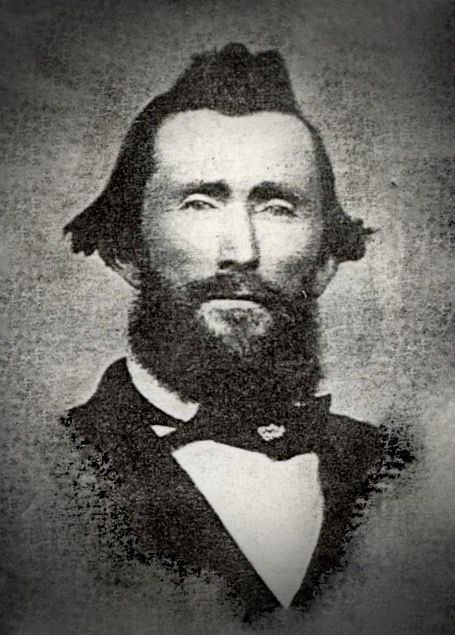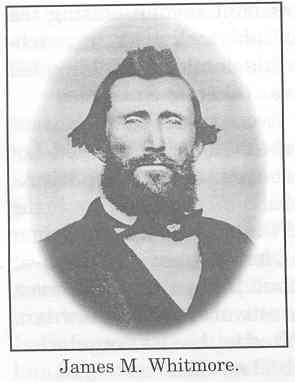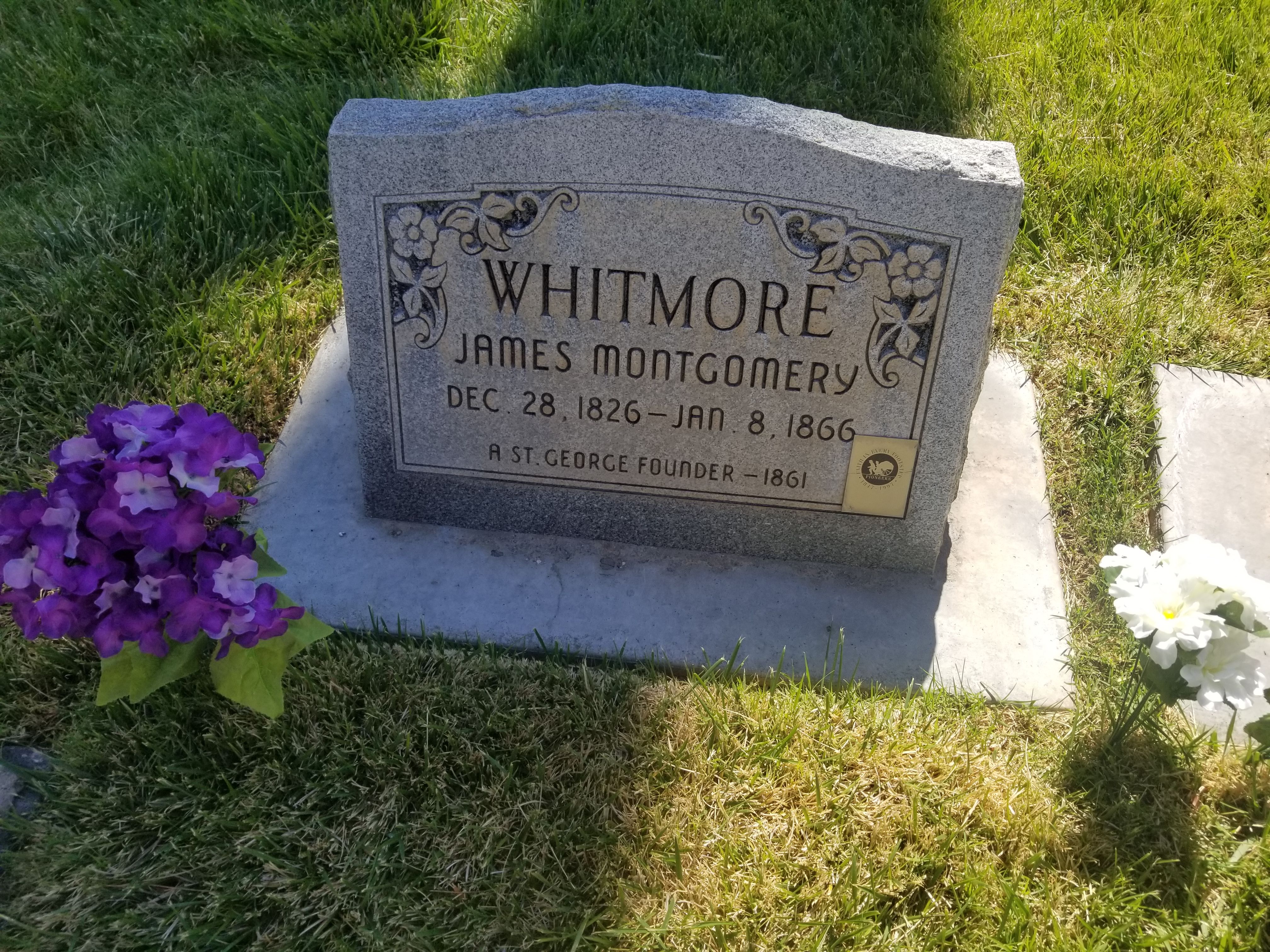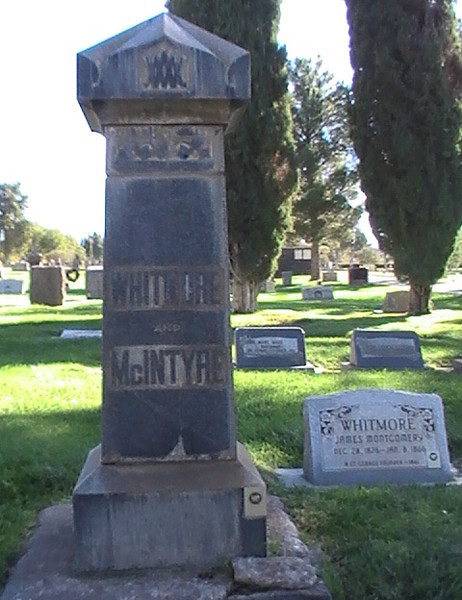The first settlers at Pipe Spring were Dr. James M. Whitmore, his eight-year-old son, and his brother-in-law, Robert Mclntire. In 1863 the three built a dugout shelter, erected corrals, planted an orchard and vineyard near the spring, and dubbed the enterprise "Whitmore's Ranch." Soon other Utah ranchers, drawn by the high desert grasses and water sources on the Arizona Strip, arrived. Pioneers from Utah soon controlled access to most of the area̓s water.
In 1854 Navajo Indians began raiding Mormon livestock on the Strip, and by 1865 the raids had escalated. In December of 1865, the Navajos attacked the Mormon militia garrisoned at Kanab where a fort was being constructed. Rancher William Maxwell, a major in the militia, wrote from Short Creek to the command post at St. George requesting reinforcements.
On January 8, 1866, some Indians raided Whitmore's Ranch and rode away with all of his sheep. Mclntire accompanied Whitmore on an expedition to recover the livestock. When the two men failed to return, Whitmore's young son set out resolutely on foot through the deep snow to summon aid. After floundering through the drifts for a few miles, the lad met a scouting party who relayed the information to the militia. On January 20 the militiamen uncovered the arrow-riddled bodies under a foot of snow. Shortly thereafter, they came upon a band of Paiutes, who, unfortunately for them, were wearing clothing taken from Whitmore and McIntire. The evidence was judged to be sufficient, and the Paiutes were summarily executed.
In 1868 militia colonel J. D. L. Pearce, in accordance with orders from his superiors at St. George, moved his small command to Pipe Spring. It was strategically located about halfway between St. George and the Crossing of the Fathers. Although the LDS militiamen built a small stone cabin as a stronghold against Navajo raids, the attacks continued. By November of 1869, the Navajos had driven off an estimated 500 head of cattle, 500 horses and mules, and about 2,000 sheep. The federal government then allowed the Navajos to return to their homeland, and peace returned to the Arizona Strip.
On the afternoon of September 12, 1870, Francis. M. Bishop was on his way from St. George to Kanab with supplies for John Wesley Powell's party. Along the way he met Brigham Young and his men who were locating possible sites for militia posts. Bishop and Young pulled into Pipe Spring where they found Major Powell, attended by his guide, Jacob Hamblin. Three of the West̓s most famous pioneers had come face to face at Pipe Spring. President Young, impressed with the fine spring and the prime grazing lands, ordered Anson Perry Winsor. that a stone fort be built immediately for the convenience and safety of future residents. Young and Anson Winsor (who was a member of Young̓s party) stepped off the tentative outlines for a combined fort and ranching establishment. The structure was to include two rows of two-story houses placed to enclose the waters of the spring.
Title to the land and spring was secured from Elizabeth Whitmore, widow of James M. Whitmore, the first settler of the area.
Elizabeth Whitmore, widow of James M. Whitmore moved to the Jacob Hamblin Home in Santa Clara with her son. They later sold the home to the Baumanns. The Baumanns Granddaughter Joesphone Baumann married a Knight and they lived there until in the 1940's.
Pipe Springs
Pioneer and Founder of Pipe Springs, Arizona (Now a National Monument). James Montgomery Whitmore, was the first white man to lay claim to Pipe Springs. After joining the Church of Jesus Christ of Latter-Day Saints in Texas, Whitmore moved with his wife, Elizabeth, several children, a brother, and a sister to Utah in 1857.
He had been a druggist before coming to Utah so he was called "Doctor Whitmore." In 1861 he moved his family from Salt Lake to St. George. On April 13, 1863, Whitmore received a land certificate for a 160-acre tract, which included Pipe Spring. Upon this tract Whitmore, assisted by Robert McIntyre established a ranch, constructed a dugout for quarters, fenced about 11 acres for cultivation, planted 1,000 grape vines, built corrals, and planted peach, apple, and other fruit trees.
An important note is Whitmore's settlement coincided with Kit Carson's military campaign against the Apache and Navajo Indian raids in Arizona. About January 9, 1866, a party of Navajo and Piute Indians drove off a herd of sheep from Whitmore's ranch. Whitmore and McIntyre set out to trail the raiders, leaving James Jr., Whitmore's 11-year-old son, in the dugout. When the men didn't return, the boy headed on foot for William B. Maxwell's ranch in Short Creek, 25 miles west.
A major in the militia, Maxwell, intercepted William and upon learning the situation began gathering men for a search party. They captured a couple of Indians and upon promise of their freedom, the Indians showed the men where the bodies of Whitmore and McIntyre were. The same Indians showed them where the Indian encampment was. Eleven Indians were captured and killed for the deaths of Whitmore and McIntyre. The bodies of Whitmore and McIntyre were returned to St George for burial. All business was suspended on the day of the funeral, January 23, 1866, and over 300 people attended the last rites of the two men.
(bio by Rhonda)
James Whitmore brought 400 longhorns with him from Texas to Utah in the 1850s. On April 13, 1863, Whitmore received a land certificate for a 160-acre tract, which included Pipe Spring.
Children: Joseph Whitmore, Brigham Whitmore, Sarah Elizabeth Whitmore, Samuel Moroni Whitmore and Tasy Whitmore Grace
The first settlers at Pipe Spring were Dr. James M. Whitmore, his eight-year-old son, and his brother-in-law, Robert Mclntire. In 1863 the three built a dugout shelter, erected corrals, planted an orchard and vineyard near the spring, and dubbed the enterprise "Whitmore's Ranch." Soon other Utah ranchers, drawn by the high desert grasses and water sources on the Arizona Strip, arrived. Pioneers from Utah soon controlled access to most of the area̓s water.
In 1854 Navajo Indians began raiding Mormon livestock on the Strip, and by 1865 the raids had escalated. In December of 1865, the Navajos attacked the Mormon militia garrisoned at Kanab where a fort was being constructed. Rancher William Maxwell, a major in the militia, wrote from Short Creek to the command post at St. George requesting reinforcements.
On January 8, 1866, some Indians raided Whitmore's Ranch and rode away with all of his sheep. Mclntire accompanied Whitmore on an expedition to recover the livestock. When the two men failed to return, Whitmore's young son set out resolutely on foot through the deep snow to summon aid. After floundering through the drifts for a few miles, the lad met a scouting party who relayed the information to the militia. On January 20 the militiamen uncovered the arrow-riddled bodies under a foot of snow. Shortly thereafter, they came upon a band of Paiutes, who, unfortunately for them, were wearing clothing taken from Whitmore and McIntire. The evidence was judged to be sufficient, and the Paiutes were summarily executed.
In 1868 militia colonel J. D. L. Pearce, in accordance with orders from his superiors at St. George, moved his small command to Pipe Spring. It was strategically located about halfway between St. George and the Crossing of the Fathers. Although the LDS militiamen built a small stone cabin as a stronghold against Navajo raids, the attacks continued. By November of 1869, the Navajos had driven off an estimated 500 head of cattle, 500 horses and mules, and about 2,000 sheep. The federal government then allowed the Navajos to return to their homeland, and peace returned to the Arizona Strip.
On the afternoon of September 12, 1870, Francis. M. Bishop was on his way from St. George to Kanab with supplies for John Wesley Powell's party. Along the way he met Brigham Young and his men who were locating possible sites for militia posts. Bishop and Young pulled into Pipe Spring where they found Major Powell, attended by his guide, Jacob Hamblin. Three of the West̓s most famous pioneers had come face to face at Pipe Spring. President Young, impressed with the fine spring and the prime grazing lands, ordered Anson Perry Winsor. that a stone fort be built immediately for the convenience and safety of future residents. Young and Anson Winsor (who was a member of Young̓s party) stepped off the tentative outlines for a combined fort and ranching establishment. The structure was to include two rows of two-story houses placed to enclose the waters of the spring.
Title to the land and spring was secured from Elizabeth Whitmore, widow of James M. Whitmore, the first settler of the area.
Elizabeth Whitmore, widow of James M. Whitmore moved to the Jacob Hamblin Home in Santa Clara with her son. They later sold the home to the Baumanns. The Baumanns Granddaughter Joesphone Baumann married a Knight and they lived there until in the 1940's.
Pipe Springs
Pioneer and Founder of Pipe Springs, Arizona (Now a National Monument). James Montgomery Whitmore, was the first white man to lay claim to Pipe Springs. After joining the Church of Jesus Christ of Latter-Day Saints in Texas, Whitmore moved with his wife, Elizabeth, several children, a brother, and a sister to Utah in 1857.
He had been a druggist before coming to Utah so he was called "Doctor Whitmore." In 1861 he moved his family from Salt Lake to St. George. On April 13, 1863, Whitmore received a land certificate for a 160-acre tract, which included Pipe Spring. Upon this tract Whitmore, assisted by Robert McIntyre established a ranch, constructed a dugout for quarters, fenced about 11 acres for cultivation, planted 1,000 grape vines, built corrals, and planted peach, apple, and other fruit trees.
An important note is Whitmore's settlement coincided with Kit Carson's military campaign against the Apache and Navajo Indian raids in Arizona. About January 9, 1866, a party of Navajo and Piute Indians drove off a herd of sheep from Whitmore's ranch. Whitmore and McIntyre set out to trail the raiders, leaving James Jr., Whitmore's 11-year-old son, in the dugout. When the men didn't return, the boy headed on foot for William B. Maxwell's ranch in Short Creek, 25 miles west.
A major in the militia, Maxwell, intercepted William and upon learning the situation began gathering men for a search party. They captured a couple of Indians and upon promise of their freedom, the Indians showed the men where the bodies of Whitmore and McIntyre were. The same Indians showed them where the Indian encampment was. Eleven Indians were captured and killed for the deaths of Whitmore and McIntyre. The bodies of Whitmore and McIntyre were returned to St George for burial. All business was suspended on the day of the funeral, January 23, 1866, and over 300 people attended the last rites of the two men.
(bio by Rhonda)
James Whitmore brought 400 longhorns with him from Texas to Utah in the 1850s. On April 13, 1863, Whitmore received a land certificate for a 160-acre tract, which included Pipe Spring.
Children: Joseph Whitmore, Brigham Whitmore, Sarah Elizabeth Whitmore, Samuel Moroni Whitmore and Tasy Whitmore Grace
Family Members
Advertisement
Explore more
Sponsored by Ancestry
Advertisement




















